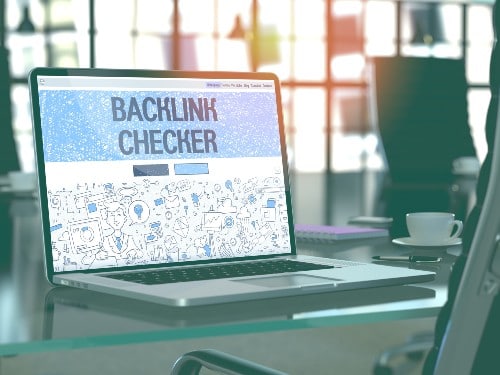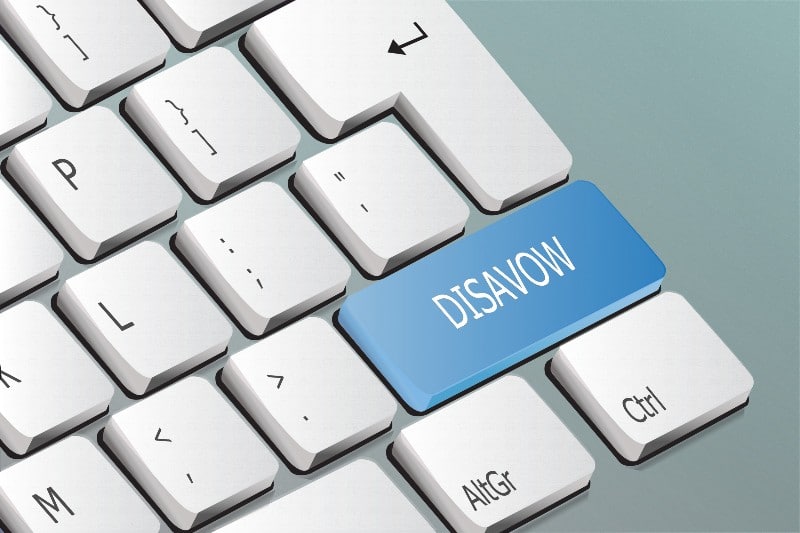What Are Backlinks?
Before we even get into whether you should or should not disavow backlinks, it’s important to know what backlinks are, how they work, and why we may want to disavow them.
Backlinks are links from other websites that point to your website. They are an important factor in Search Engine Optimization (SEO) because they help to show Google that your website is authoritative and relevant for certain search terms.
In the early days of the internet, search algorithms weren’t as sophisticated, and some would simply look at the number of links and backlinks on your page. Quality wasn’t taken into consideration, and many website owners would trade with each other to increase the number of links. Some would even create multiple websites to link to each other to try to game the system!
It sounds like the more backlinks the better, right? Not so fast. Backlinks can actually hurt your reputation if they come from a website that’s not trusted. Google has been cracking down on bad links since the Penguin algorithm change in 2012. Before this, shady website owners would game the system with “Black Hat” SEO tactics.
Currently, the highest quality backlinks are created from some of the following activities:
- Inviting bloggers to create content on your site, providing them additional exposure and a quality backlink for you
- Producing quality research—content others will link to
- Working with influencers
- Updating any broken links on your site, and keeping your content fresh so backlinks don’t get pruned
Why Would I Disavow Backlinks?
If you’re seeing a sudden spike in bad backlinks pointing to your site, or if you’ve suddenly been penalized by Google, you may need to disavow some of those links.
 Disavowing backlinks is the process of telling Google not to consider certain links when assessing your website. It’s important to note that disavowing links doesn’t guarantee that you’ll be removed from Google’s penalty box; it simply helps Google better understand which links should be ignored.
Disavowing backlinks is the process of telling Google not to consider certain links when assessing your website. It’s important to note that disavowing links doesn’t guarantee that you’ll be removed from Google’s penalty box; it simply helps Google better understand which links should be ignored.
If you’ve been hit with a manual penalty, disavowing backlinks is the first step you should take. However, if your website has been algorithmically penalized, disavowing links may not help; in fact, it could make the situation worse.
Disavowing links can have different effects depending on how many bad links you disavow and what type of site you are. It is always best to consult with an SEO specialist like Sympler before making any decisions about disavowing links.
Should I Disavow All Links?
There is no one-size-fits-all answer to this question. It is important to consider the quality of your backlinks and the effects of disavowing them before making a decision.
How to Disavow Bad Links
First, you will need to find the links that you want to disavow. There are a few ways to do this:
- Use Google Webmaster Tools: In Google Webmaster Tools, click on “Links” in the left-hand menu. Under “Internal Links”, select “More.” You’ll then be able to see a list of all the links on your site. If there are any bad links, you can click on them to get more information, including the link’s source.
- Use a Backlink Checker: There are a number of different backlink checkers out there, such as Moz’s Link Explorer and Majestic SEO. These tools will show you all of the backlinks pointing to your site, as well as information on the links’ sources and anchor text.
- Use Google Search: You can also use Google Search Console, and Google will return any pages that contain links to your site that may be considered bad. Note that you will have to verify that you own the domain by logging in to your domain name provider (like GoDaddy.com or Namecheap.com) and updating a DNS record. Google provides clear instructions on what needs to be done.
Once you’ve found the links you want to disavow, it’s time to disavow them. This is done through the Disavow Links Tool in Google Webmaster Tools. To use the tool, and to be sure you are following the most updated instructions, refer to the documentation provided by Google here. Google will then start processing your request. This may take some time, so be patient!
That’s all there is to it! Disavowing backlinks can be a little tricky, but following these steps should make the process a little easier.
Got questions about your backlink portfolio? Or perhaps you’re concerned your backlink toxicity is too high? Contact Sympler today for a free consultation!
Good luck!




